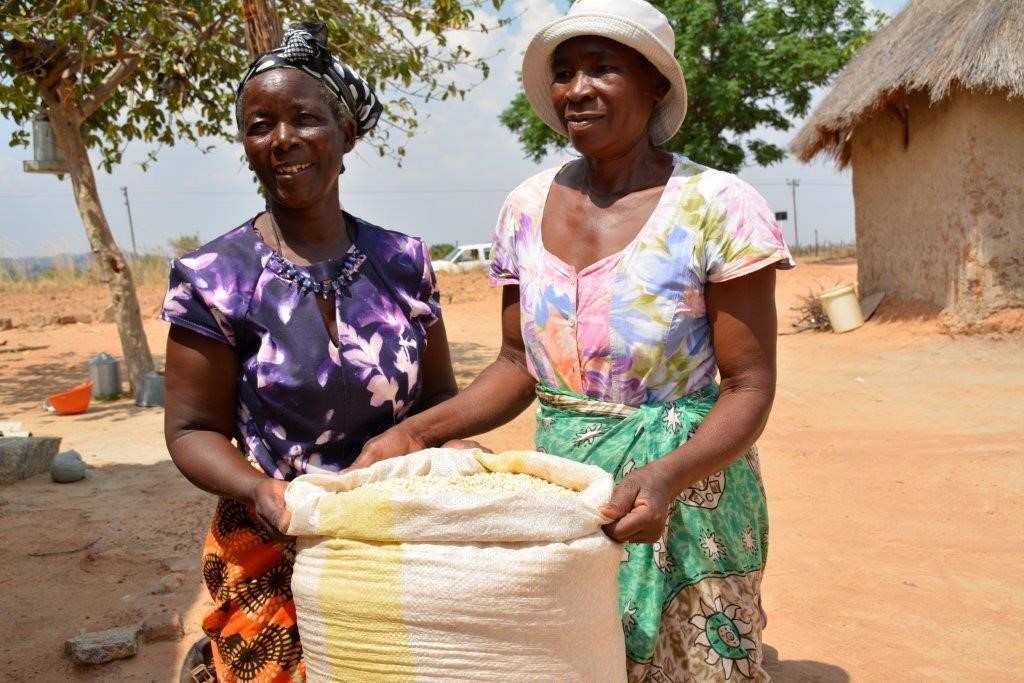The year 2015 marked 30 years of CIMMYT’s Southern Africa Regional Office (CIMMYT-SARO) developing new maize varieties adapted to smallholder farmer needs in Zimbabwe and across sub-Saharan Africa.
“Multiple stress tolerant and nutritious maize hybrids developed by CIMMYT-SARO have been released by partners throughout eastern and southern Africa,” said Amsal Tarekegne, CIMMYT-SARO Senior Maize Breeder.
CIMMYT-SARO and partners have also produced new maize varieties that yield 20-30% more than currently available widely grown commercial varieties under drought and low nitrogen stress conditions.
Farmers in eastern and southern Africa need maize varieties that are climate resilient, high-yielding and nutritious.“CIMMYT-SARO successfully achieved this by not only developing six multiple stress tolerant hybrids ready for release in Kenya, but eight hybrids were released in Zambia, ten in South Africa, four in Zimbabwe and three in Tanzania,” said Mulugetta Mekuria, CIMMYT-SARO Regional Representative, speaking to more than 100 staff members participating in a team building meeting on 11 December 2015.
“Out of these, there were four provitamin A maize varieties that were released––three in Zambia and one in Zimbabwe. There were also five quality protein maize (QPM) hybrids released––two in Zambia, two in South Africa and one in Tanzania,” said Mekuria.
A young girl gets a valuable dose of vitamin A by eating this nutritious orange maize. Vitamin A deficiency blinds up to half a million children annually and increases risk of death from disease. By consuming vitamin A maize, children may obtain up to 50% of their daily vitamin A needs. Photo credit: Eliab Simpungwe/HarvestPlusVitamin A deficiency is widely prevalent in Africa and can result in morbidity, blindness, and even death. Maize is a staple crop throughout the region, and hybrid varieties with high provitamin A can help prevent many of these diseases. Quality protein maize has likewise proven to increase the growth rate of moderately malnourished children who survive on a maize-dominated diet.
“Currently, we have received more than 15 new requests for rights to use CIMMYT hybrids from 2013 and 2014 regional trials,” said Tarekegne. Regional trial requests are in high demand from emerging seed companies across the region as well as in Egypt, Nigeria, Pakistan and other countries in Asia and Latin America.
The Drought Tolerant Maize for Africa Seed Scaling (DTMASS) project, funded by the United States Agency for International Development (USAID), was also implemented in March 2015. Building on the achievements of the Drought Tolerant Maize for Africa and other CIMMYT-Africa maize projects from 2007 to 2014, DTMASS aims to meet demand and improve access to good-quality maize through production and deployment of affordable and improved drought-tolerant, stress-resilient and high-yielding maize varieties for smallholder farmers in seven eastern and southern African countries.
CIMMYT-SARO Representative Mulugetta Mekuria (left) speaks to Casper Kamutando, a CIMMYT maize breeding student, at the CIMMYT-SARO end of year team building meeting in Harare, Zimbabwe, on 11 December 2015. Photo: John Mpala/CIMMYT.USAID’s Feed the Future Malawi Improved Seed Systems and Technologies (MISST) project was also launched in May 2015 and aims to sustainably reduce poverty and hunger in Malawi.
“CIMMYT-SARO looks forward to another 30 years of working with farmers throughout Africa and beyond by continuing to provide the best maize seed and professional support available,” added Mekuria.
Addressing more than 100 CIMMYT-SARO staff at the team building meeting, Jonah Mungoshi, a renowned Zimbabwean motivational speaker and success coach, advised the participants on how to succeed in the workplace. CIMMYT-SARO seed health technician Tanyaradzwa Sengwe said he appreciated the professional environment at SARO, and hoped that it would continue, or even improve, in the future.
 Capacity development
Capacity development 